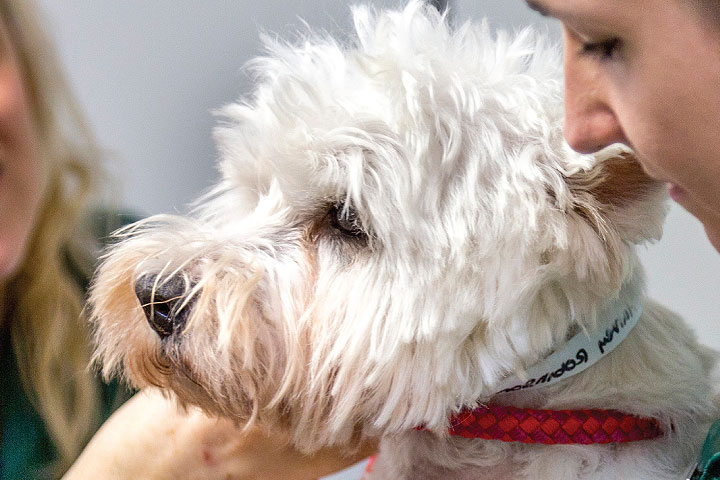
You are extremely likely to see at least one dog a day with a cutaneous mass, many of which will be clinically irrelevant and likely to stay that way, but there is a significant proportion which are more concerning.
Differential diagnoses
There is an enormous list of differential diagnoses for dogs with a cutaneous mass and within each category in the table below, there is a wide variation in behaviour, outcome and the most effective treatment. The table shows noteworthy examples and is not an exhaustive list.
hamartoma
The clinical priority
The clinical priority when faced with a dog with a cutaneous mass is to decide whether further action needs to be taken. It is a skill to discriminate truly innocuous from potentially hazardous lesions, but there a number of factors which can be used.
The way a mass looks is important. Ulceration, haemorrhage, the presence of multiple masses and larger size are all more likely be associated with malignant neoplasms. However, it is very difficult to tell by eye which of the pictures (right) shows a malignant neoplasm and which is benign…
One image is of T-cell lymphoma, which can develop into a serious clinical issue and requires specific management. The other is of a sebaceous adenoma, which is not likely to ever cause a problem.
Can you tell which is which?
The history of progression of the mass and how it clinically affects the dog can also be crucial in getting a feel for whether the lesion is something to be concerned about. In the above photos, the lymphoma appeared to grow rapidly whereas the adenoma stayed static in size for some time.
Therefore, the likelihood of a malignant tumour can be estimated using a number of clinical and historical factors relating to the mass. If any of these bullet points apply, it is worth investigating further.
- Change in size
- Change in appearance
- Presence of ulceration
- Evidence of pain/irritation
- Multiplicity of masses
There are some observations which generally indicate a lower gravity of lesion but presence of these does not exclude malignancy.
- Sharp interface between mass and normal skin
- Presence of lobulation
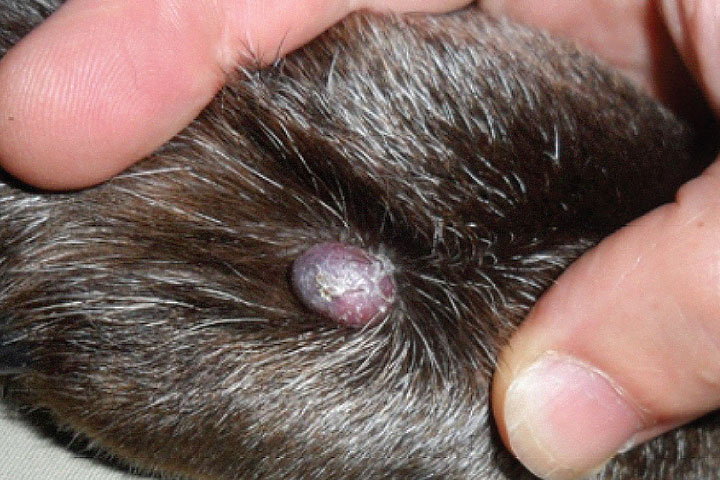
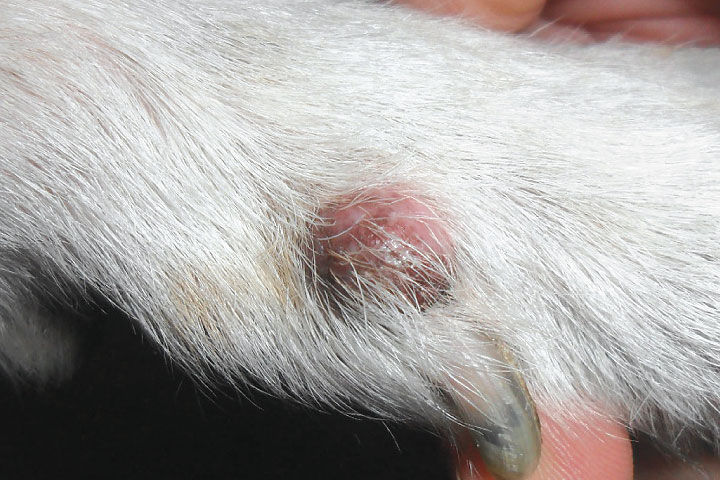
It is also worth considering that certain breeds are predisposed to certain tumours in certain locations. For example, a pigmented lesion on the toe of a Rottweiler is highly likely to be a melanocytic neoplasm and should be investigated. A mass anywhere on a flat-coated retriever should never be ignored.
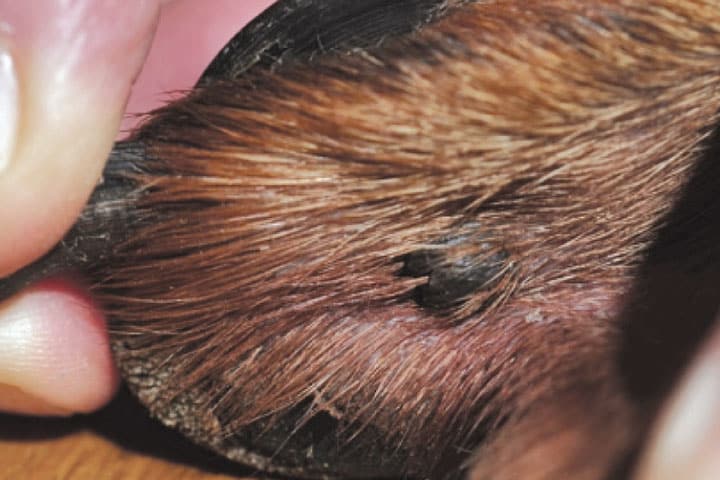
How to investigate
Fine needle aspirate
This is a very low morbidity and low cost test which will often be diagnostic. As such it is very useful and it is almost certainly never the wrong thing to do! If any of the clinical considerations above are worrisome, we recommend an FNA. We would also recommend an FNA for any mass which has been present for longer than one month and is larger than one centimetre. FNAs can be looked at in-house or sent away depending on your confidence level. Excisional biopsy
This will be a diagnostic and curative procedure for many innocuous-looking masses. However, it can lead to problems if performed on certain malignant tumours. Therefore, if any of the clinical considerations above are concerning (rapid growth, ulceration etc.) think twice! Consider an FNA first.
Monitoring
Many benign skin lesions will never cause a clinical issue and monitoring will be appropriate. This can be used in masses smaller than 1cm or if an owner does not want to perform an FNA. Clearly, this should not be recommended for masses with concerning clinical features. Many owners will come to us here at NDSR a little aggrieved that they have been advised to monitor a small mass which subsequently got larger and then turned out to be something more concerning and difficult to treat.
Monitoring of the mass may have been entirely appropriate at the time but the key is to choose the right cases to monitor and most importantly, to make it an active process. At the start of monitoring owners should be offered the opportunity to investigate with an FNA/excisional biopsy. If this is declined, it is very useful to measure the diameter of the mass with callipers.
The owners should be asked to roughly assess the size of the mass at routine intervals, say once monthly, to call if the mass changes and a recheck should be scheduled at a predetermined time, three months later will usually be appropriate. Depending on the progress and calliper measurement at this time, the ongoing plan should be reassessed. This gives much more control to the situation and a net to catch all those masses which are not innocuous after all.
Below is an algorithm which we hope will be useful in dictating what to do with an innocuous-looking skin mass. An algorithm like this cannot fit every clinical situation so if you have any questions about a case, please contact us. We are happy to give advice by phone or email.
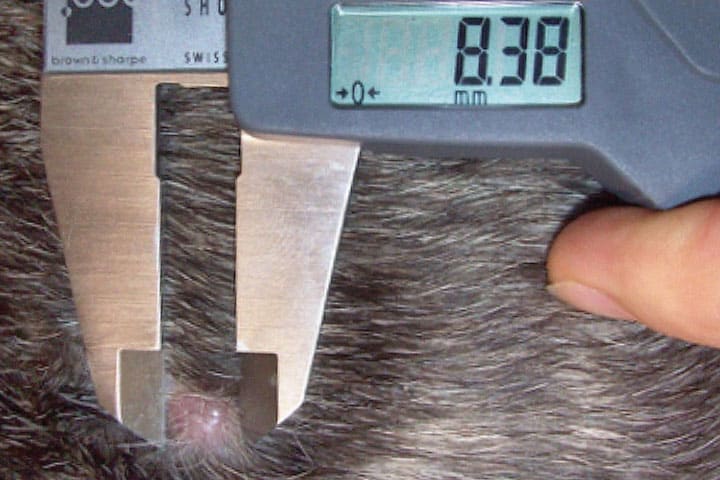
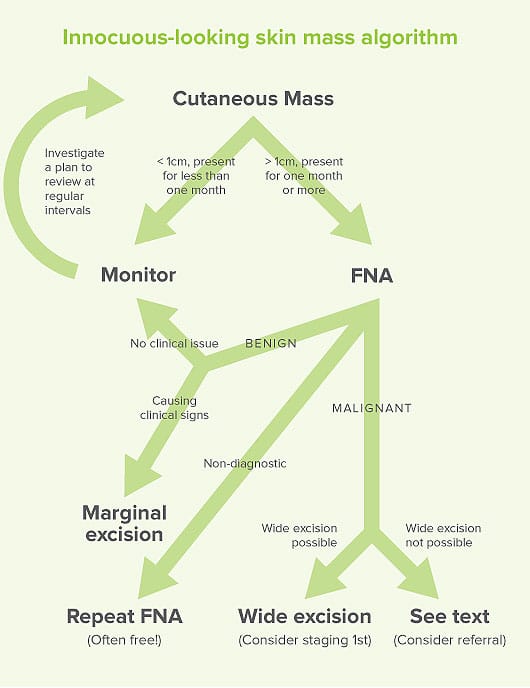
If malignancy is suspected, it is often appropriate to undertake an assessment of the anatomic extent of the tumour before excision is performed. We call this clinical stage evaluation or ‘staging’. Cytological assessment of the locoregional lymph node is always appropriate. Imaging of the abdomen and thorax may be appropriate depending on the expected behaviour of the tumour. We are happy to advise if help is needed.
Key messages
- Many lesions, benign and malignant, can manifest as a seemingly innocuous skin mass
- Fine needle aspirate is advised for cases with characteristics of potential malignancy
- Objective measurement using callipers assists assessment of change of size
- Marginal excision is appropriate for benign masses but can complicate management of malignant lesions
Case Advice or Arranging a Referral
If you are a veterinary professional and would like to discuss a case with one of our team, or require pre-referral advice about a patient, please call 01883 741449. Alternatively, to refer a case, please use the online referral form
About The Discipline
Oncology

Need case advice or have any questions?
If you have any questions or would like advice on a case please call our dedicated vet line on 01883 741449 and ask to speak to one of our Oncology team.
Advice is freely available, even if the case cannot be referred.
Oncology Team
Our Oncology Team offer a caring, multi-disciplinary approach to all medical and surgical conditions.